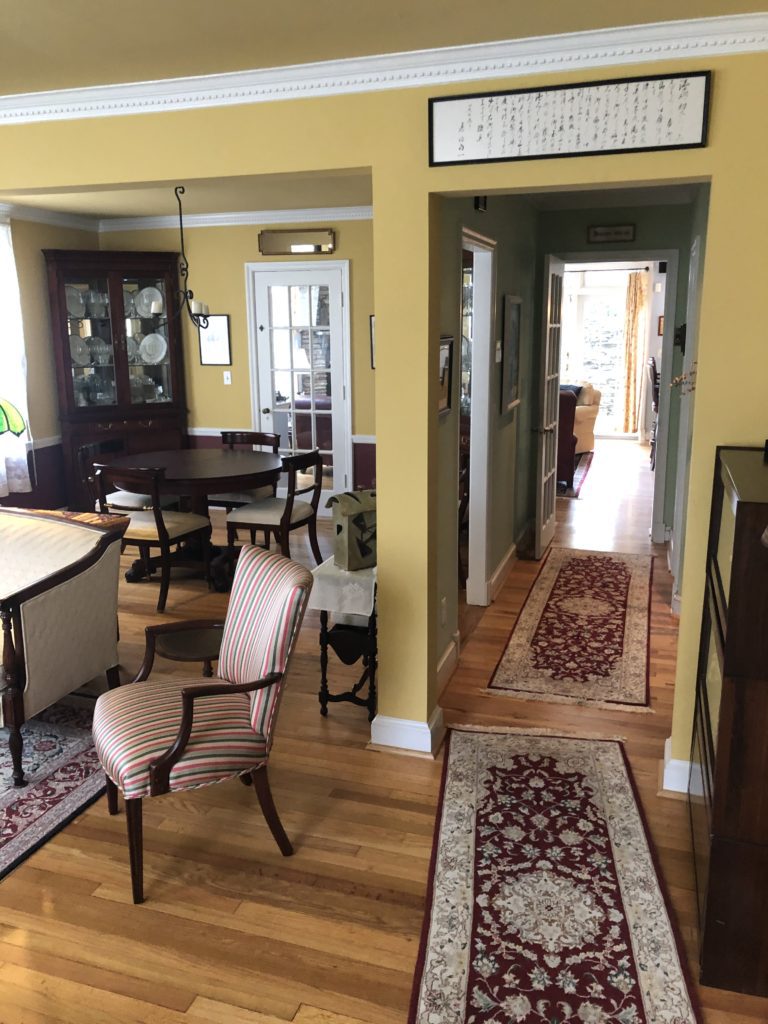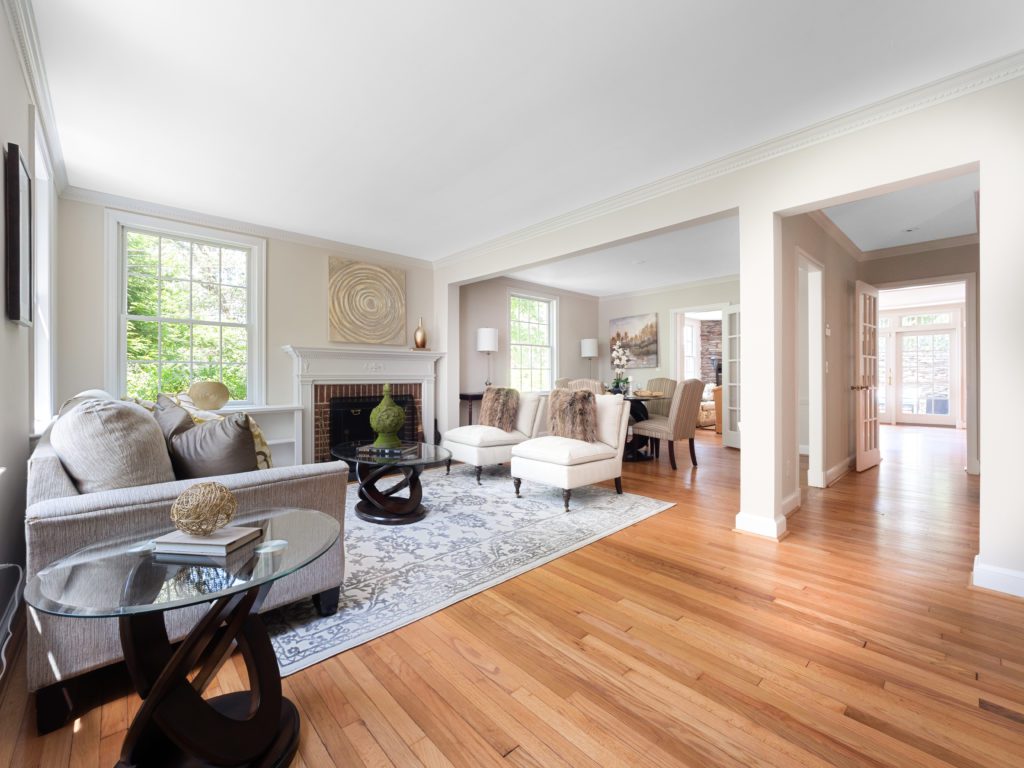Selling a Home? Consider the Art (and Science) of Staging
By • February 3, 2022 2 1911

With a hot real estate market, many home sellers looking for a quick-and-easy sale, face the financial and time-consuming costs of showcasing their own homes for potential buyers to tour in-person or virtually. But opting to do your own “staging” – without the advice of an expert – may be a big mistake. You might end up wasting valuable time in the process and losing money you could have gained on the sale.
To learn more about staging a home for sale, we spoke with Melinda Estridge, an expert in the art and science of home showcasing and real estate sales. With over 40 years of full-time real estate experience and having toured “hundreds and hundreds” of homes with potential buyers, Estridge now heads her own company – the Estridge Group at Long & Foster Realtors serving the D.C. Metro area.
“I know people consider staging just moving in furniture and setting things up,” Estridge said, “but really the staging we do is a full process from doing pre-inspections on properties to [finding out] and correcting any glaring issues that would matter to a purchaser as well as wall colors, possibly switching out appliances, old fixtures – you know, we take an assessment of the whole property, typically with a designer or a professional stager, to get a sense of the house in total and what things would be money-making items that could be replaced, tweaked, remodeled, etc., from carpeting to flooring, all of that…. Some homes might need a complete job.”
But, how is this a tangible investment for the home seller? “People are looking to maximize their dollar and sell within a relatively short period of time. If you tell people you’re putting in a dollar and pulling out another three, I think it’s very impactful for them, especially if you’re willing to handle the entire project,” Estridge said. “There’s no question that things like painting, redoing hardwood floors, changing out old appliances in the kitchen, anything that looks very dated, ceiling fixtures that are old and need to be replaced, lighting in general, and fresh carpeting always makes a difference. And, depending on people’s furniture or decor, if it’s vacant or all the furniture is mis-matching with collections over the years, putting in the right furniture is key. There’s just no question about the impact both from the staging of the photographs to people just coming through. I think they really just emotionally get a sense of the house and it’s really just a positive.” Estridge and her team of stagers, designers and sales associates have kept years of data on what home selling customers have invested in staging versus their final sales returns.
Many home sellers become accustomed to their house’s appearance and decor and don’t realize what sorts of distractions can inhibit buyers as they tour a home. A professional stager or designer, however, can determine the “purposing” and unified presentation of each room. “What you’re trying to do with the colors and the furniture is to feature the house and not have people concentrate on the personal items. So, each room is set up where it looks good on camera, which would then invite people to go further and come through the house for a tour. If the house looks like a fixer-upper or is very cluttered or you can’t get a sense of the house, people might pass it by, especially in markets that are a little bit less vibrant than the one we’re in right now,” Estridge said.

A “Before” shot of a living and dining area from one of Estridge’s customers. Photo courtesy Estridge Group.
Investing in the staging process has to be done carefully, Estridge warns. Some home fixes just might not be worth it. These include “brand new windows, unless the [existing windows] are absolutely decrepit or sealed shut…. They just don’t have the return right up front,” Estridge said. “We also don’t do very expensive appliances or materials or light fixtures because you want high impact but you know people are pretty good with [seeing] simple things as long as they look modern. Also, ripping out whole kitchens and bathrooms typically doesn’t pay as well as simply painting a cabinet, or putting on a new handle or doing a new countertop. In bathrooms that are dated or colored and the tiles are old, just reglazing can have a high impact versus re-doing all of the tiling.”
While many have heard of the pop psychology of using the smell of freshly baked cookies to entice home buyers on tour, Estridge prioritizes using the smells of fresh and clean surfaces and creating scenes where buyers can imagine themselves living immediately in the space. “Everything is emotional when you’re buying a property,” Estridge said. “You know, the way light shines through the windows. I don’t necessarily think you need the cookie thing, but certainly fresh paint and fresh carpeting smells new and inviting…. We put a lot of window washing and scrubbing things down before we put the home on the market and I think that’s always appealing…. There’s just the emotional thing that you’re walking in and you can envision yourself within the house…. And when things are looking like a model [home], I think most everyone responds well.”

An “After” shot of the same living and dining areas. Photo courtesy Estridge Group.
Other tricks of the trade Estridge shared include tending to anything in the home that suggests water leakage, rotting wood, dampness, mold, mildew or staining. Customers who notice hardscaping issues outside, chimney or brick-appointing problems, untended landscaping, or potentially expensive up-front costs can be dissuaded from purchasing. In old and historic Georgetown homes, lighting can also be an issue because of the “railroad track” design of many homes with their smaller original windows. So, it’s vital that every room and space be well lighted with modern fixtures.
“Having done hundreds and hundreds of appointments with stagers,” Estridge said, she has gained “a sense of what their thoughts are, what their perspectives are, and what they’re going to want to see…. They can look at a room and know just what they’re going to bring in from their warehouses…. So, I think it’s important to hire a professional stager because they really know what they’re doing.”


The single most important factor in determining the success of your real estate sale is the presentation of your home. If your home looks good, you’re more likely to draw buyers and eventually sell it for a profit.
Staging is something I severely underestimated before reading this article and seeing what we need to do. If I want this home to sell for the value we want it to, it looks like a lot of extra work may be needed. Once I find a home-selling real estate agent in the area, I’ll get their help with this kind of staging process.